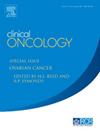Machine Learning–Driven Identification of Molecular Subgroups in Medulloblastoma via Gene Expression Profiling
IF 3.2
3区 医学
Q2 ONCOLOGY
引用次数: 0
Abstract
Aims
Medulloblastoma (MB) is the most prevalent malignant brain tumour in children, characterised by substantial molecular heterogeneity across its subgroups. Accurate classification is pivotal for personalised treatment strategies and prognostic assessments. In this study, we aimed to build machine learning models to classify MB subgroups.
Materials and Methods
This study utilised machine learning (ML) techniques to analyse RNA sequencing data from 70 paediatric MB samples. Five classifiers—K-nearest neighbors (KNN), decision tree (DT), support vector machine (SVM), random forest (RF), and naive Bayes (NB)—were used to predict molecular subgroups based on gene expression profiles. Feature selection identified gene subsets of varying sizes (750, 75, and 25 genes) to optimise classification accuracy.
Results
Initial analyses with the complete gene set lacked discriminative power. However, reduced feature sets significantly enhanced clustering and classification performance, particularly for group 3 and group 4 subgroups. The RF, KNN, and SVM classifiers consistently outperformed the DT and NB classifiers, achieving classification accuracies exceeding 90% in many scenarios, especially in group 3 and group 4 subgroups.
Conclusion
This study highlights the efficacy of ML algorithms in classifying MB subgroups using gene expression data. The integration of feature selection techniques substantially improves model performance, paving the way for enhanced personalised approaches in MB management.
基于基因表达谱的髓母细胞瘤分子亚群的机器学习识别
目的髓母细胞瘤(MB)是儿童中最常见的恶性脑肿瘤,其特点是其亚群之间存在大量的分子异质性。准确的分类对于个性化治疗策略和预后评估至关重要。在本研究中,我们旨在建立机器学习模型来对MB亚组进行分类。材料和方法本研究利用机器学习(ML)技术分析了70例小儿MB样本的RNA测序数据。5种分类器——k近邻(KNN)、决策树(DT)、支持向量机(SVM)、随机森林(RF)和朴素贝叶斯(NB)——用于基于基因表达谱预测分子亚群。特征选择识别不同大小的基因子集(750、75和25个基因),以优化分类精度。结果用完整的基因集进行初步分析缺乏辨别力。然而,减少的特征集显著提高了聚类和分类性能,特别是对于组3和组4子组。RF、KNN和SVM分类器始终优于DT和NB分类器,在许多场景下,特别是在第3组和第4组子组中,分类准确率超过90%。结论本研究突出了ML算法在利用基因表达数据对MB亚组进行分类的有效性。特征选择技术的集成大大提高了模型的性能,为MB管理中增强的个性化方法铺平了道路。
本文章由计算机程序翻译,如有差异,请以英文原文为准。
求助全文
约1分钟内获得全文
求助全文
来源期刊

Clinical oncology
医学-肿瘤学
CiteScore
5.20
自引率
8.80%
发文量
332
审稿时长
40 days
期刊介绍:
Clinical Oncology is an International cancer journal covering all aspects of the clinical management of cancer patients, reflecting a multidisciplinary approach to therapy. Papers, editorials and reviews are published on all types of malignant disease embracing, pathology, diagnosis and treatment, including radiotherapy, chemotherapy, surgery, combined modality treatment and palliative care. Research and review papers covering epidemiology, radiobiology, radiation physics, tumour biology, and immunology are also published, together with letters to the editor, case reports and book reviews.
 求助内容:
求助内容: 应助结果提醒方式:
应助结果提醒方式:


